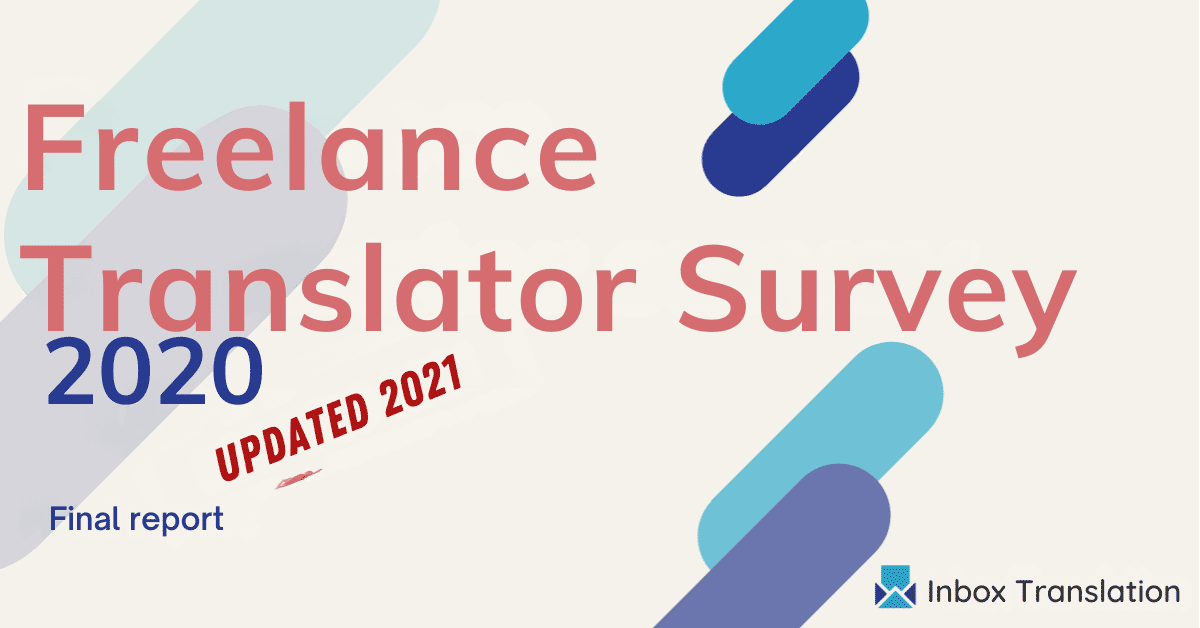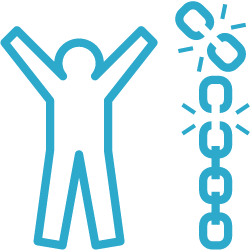[Research] Freelance Translator Survey 2020:
1. Key findings & demographics
From business practices to rates, everything you wanted to know about your peers
Published on 30 November 2020, Last updated 07 January 2021
These findings are based on a worldwide survey of freelance translators carried out by Inbox Translation between 17th March and 10th April 2020. The survey explored a wide range of work- and lifestyle-related characteristics of freelance translators who answered our call. The survey was distributed and promoted in various translators’ groups on Facebook and LinkedIn, on Twitter, in professional translation associations’ newsletters, as well as through Alina’s professional network of translators.
The margin of error (according to the SurveyMonkey calculator) is 3%, with a confidence level of 95%.
We have split the report into 5 sections (you can navigate between them using the links or buttons at the bottom of each page).

Key findings
Top areas of specialisation

The top three areas freelance translators specialise in are law (22% of respondents), advertising (17% of respondents), business, and medicine (each mentioned by 16% of respondents).
Part-time work – men vs women

There are two areas where there are significant differences: balancing work and family (29% of women and 18% of men) and having an additional full-time job (23% of men and 14% women).
Challenges of being a freelance translator

Low rates of pay have been mentioned by 59% of respondents as the main challenge they face as freelance translators.
Benefits of being a freelance translator

Freedom is what 64% of respondents said that they like most about being freelance – being their own boss and flexibility in choosing their working hours.
Preferred communication method

Perhaps not surprising, email is by far the preferred method of day-to-day communication with clients (89%).
You know what they say: If it can be texted, don’t call me! 🙂
Negotiating rates with clients

Translation agencies are 2.5 times more likely to ask translators to lower their rates than direct clients. Only 23% of freelance translators have never had this request from agencies, while 59% have never received this question from direct clients.
Education and background

Translators are highly educated, with only 7% of them having come to the profession with no formal degree. The rest of 93% have at least one degree (39% in languages).
Not only that, but 90% of them also invest time in continuing professional development.
Professional membership

Members of professional associations charge on average 30% more than freelance translators who are not members of professional translation associations (both when using the mean and median averages).
Men vs women – rates

Women who work as freelance translators charge on average 7% more than their male counterparts (per word). When comparing minimum fees, men charge on average 5% more (calculations done using the mean average).
When using the median average, women charge in fact approximately 12% more and there is no difference in terms of minimum fees.
Specialists vs generalists – rates

Freelance translators who narrowly specialise (1-2 areas) charge on average 29% more than those who stated they have no specialist areas.
The above figures were obtained using the median average.
Survey sample and demographics
26 out of the 1,536 respondents did not qualify for this survey since their work did not include translation (they offered other linguistic services). Future surveys dedicated to those who work in these areas are planned.
A total of 1,510 freelance translators took part in our survey and completed at least some questions (numbers completing each question are shown as n=x in the results).
Experience
Their length of experience as a freelance translator ranged from less than a year to more than 30 years.
Gender
Of the 1,030 respondents that provided information on their gender, 76% are female.
This finding is very much in line with what other surveys in the field have revealed. According to the European language industry survey 2020 , almost 80% of the respondents (in the independent professional category) are women. Similarly, a survey carried out by Association des traducteurs littéraires de France (ATFL – The Association of Literary Translators of France), 80% of their members identify as women (up from 67% in 2008).
Age
A wide range of ages were represented in the sample, from under 25 to over 65, but with a majority of 80% aged between 25 and 54 (n=1,029).
Country
When asked to indicate which country they are currently based in, a total of 94 countries of residence covering all continents were mentioned by the 1,027 respondents who provided this information.
Overall, 19% of these respondents are based in the United Kingdom, followed in frequency by Germany (9%, n=97), France (9%, n=89), Spain (7%, n=69), and Italy (6%, n=62). Many other countries were represented in the sample by just one or just a small number of respondents.
Distribution of survey respondents by region:
- Overall, 73% (n=747) were based in Europe, but covering a total of 38 different countries.
- 9% (n=91) were based in South American, Central American or Caribbean countries, and 7% (n=68) in North America (US, Canada or Mexico).
- 5% of the sample (n=56) were based in countries in the Middle East and North African region, and 4% in Asian countries.
- The ‘Other’ category covers small numbers of respondents based in Sub-Saharan African countries (n=12) and Australia (n=9).
Education
We were also interested to find out about the educational backgrounds of freelance translators and asked respondents to indicate which of a list of qualifications they hold (they could tick more than one). The figure below shows the percentage of respondents with each type of qualification, arranged in descending order.
The above shows that the most commonly held qualification is a first degree in languages, cited by 39% of the respondents.
A first degree in translation or a postgraduate degree in translation were the next most commonly cited qualifications, with 29% and 25% of respondents respectively holding these.
22% hold a first degree in a different subject, and 16% a postgraduate qualification in a different subject, and 10% hold a postgraduate degree in languages.
Overall, this indicates that freelance translators are a highly qualified group, with around half of the sample holding a postgraduate qualification. Only 7% have no formal degree.
Analysis of the ‘Other – please specify’ responses given by 9% of respondents (n=129) who cited other qualifications indicated that many of these actually fell within the listed qualifications, as they consisted of a degree or postgraduate qualification.
The other most commonly cited qualifications were a diploma (either in translation or another subject), mentioned by 28 respondents, and a certificate (in translation or another subject), mentioned by 20.
Men vs women – routes into the profession
Looking at the background of freelance translators and their routes into the profession, we wanted to see whether and how these differ when it comes to men and women. We discovered that while there is little difference in terms of percentages of those who studied languages (either degree or postgraduate level), this difference is more significant when comparing translation studies and studying a different subject.
As seen above, more women than men (38% vs 24%) have studied translation (either at degree or postgraduate level), and more men than women have come to the translation profession after studying in a different field (21% of women vs 36% of men).
Before moving on to the next 4 pages of the detailed report…
Are you a translator or interpreter? Do you want to take part in future research or read the reports? Make your voice heard!
We are planning to conduct other surveys (shorter and more focused) on topics such as:
- rates
- collaborating with colleagues
- best practices
- one focused on interpreting etc.
Want to read the full report?
You can read more details about each topic covered by exploring the rest of sections linked below (or use the navigation buttons).
Sections of Freelance Translator Survey 2020
- Key findings & demographics (current page)
- Working as a professional translator
- Working with clients
- COVID-19 & Brexit
- Freelance translator profile

This work is licensed under a Creative Commons Attribution-ShareAlike 4.0 International License. In other words, you are free to share, distribute, or build on the content found on this page, but we kindly ask you to attribute the authors of this project by providing a link back to this page so that your audience can read more about our research.


